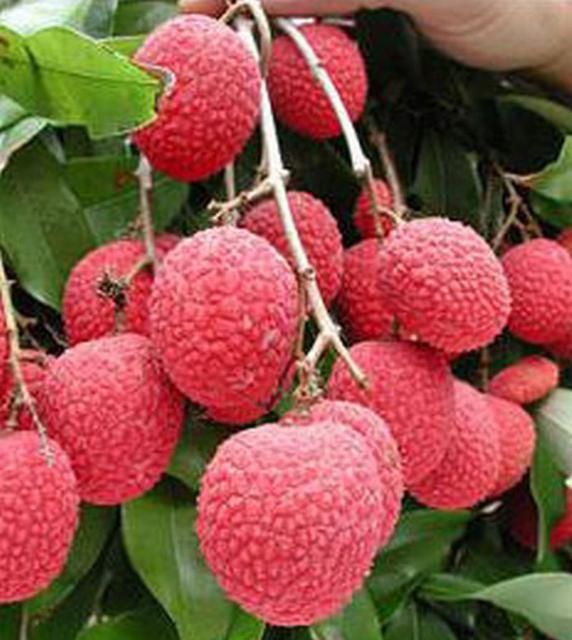
Description
Lychee is originally from southern China. The word "Lee Chee" in Chinese means "gift for a joyful life." Lychee grows on trees in clusters of 2 to 30 fruits. The fruit has a unique, rose-like aroma and flavor. The fruit is very attractive, sweet, juicy, and delicious. Lychee is high in vitamin C.
Packing for Shipment
For higher quality, hydrocool fruits to 41oF, de-stem, and pack as soon after as harvest as possible. Hydrocooled using chlorinated water (100 to 200 parts per million free chlorine) and de-stemmed fruit lose less water and maintain peel color better than non-hydrocooled fruit and fruits shipped with the panicle attached. Usually lychee is packed in 5- to 10-lb fiberboard boxes for the Asian-American market. If hydrocooled, wrap the fruit with a polybag prior to packing to maintain freshness.
Supply
Heaviest production is in June, with a lighter supply in mid May and early July.
Postharvest Life
Lychee will not ripen off the tree, so they must be picked ripe, when the pulp is at its optimum sweetness. Lychee is considered highly perishable and the peel will become brown and dry soon after harvest if not cooled immediately. Hydrocooled lychee may have a transit, storage, and shelf life of 14 to 21 days. For highest quality, it is imperative to maintain the cold chain from farm to the retail store. Brewster fruit stores best at 38°F; Mauritius fruit at no less than 41°F, with 90–95% relative humidity.
Preparation
Lychee fruit can be peeled, pitted, and eaten out of hand; added to fruit cups; stuffed with cottage cheese; and blended with ice cream, gelatin or fruit juices. Lychee may also be placed on top of baking hams or grilled on top of steaks and mixed-in with stir-fried chicken and vegetables just before serving. Unpeeled lychee can be frozen and later thawed for immediate consumption. Lychee wine is popular.